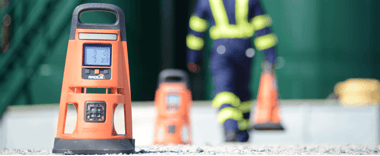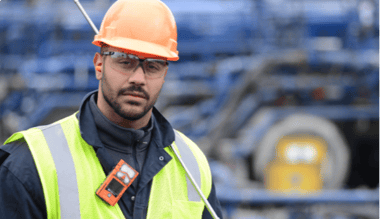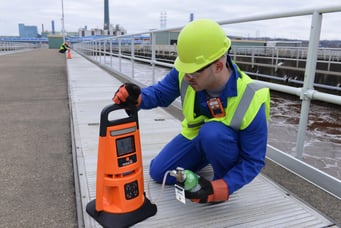While many people have never heard of chlorine dioxide (ClO2), many of the items we use daily are treated using ClO2. Chlorine dioxide is commonly used in pulp and paper, water treatment, and general sanitizing and disinfecting in agriculture and medical industries.
For example, the pulp and paper industry commonly uses chlorine dioxide to bleach wood pulp, which then goes on to become paper and cardboard. Municipal water treatment plants use chlorine dioxide in the process of disinfecting drinking water and removing tastes and odors. Water cooling towers are also treated with chlorine dioxide to control bacteria growth. Lastly, chlorine dioxide is used for sanitation, both in the fumigation of fruits and vegetables to prevent mold growth and damage prior to consumption, and in the disinfection of medical equipment used in surgeries and procedures.
Detecting Chlorine Dioxide (ClO2)
While chlorine dioxide is used in many industrial applications, it is toxic and should be monitored for its presence in air to ensure safe levels. The Occupation Safety and Health Administration (OSHA) has set an 8-hour permissible exposure limit of 0.1 ppm in air for chlorine dioxide.
The Radius BZ1 Area Monitor can now be equipped with a chlorine dioxide sensor to detect this gas at levels up to 1 part per million in increments of 0.01 parts per million. Each Radius BZ1 can be configured as a diffusion instrument (no pump) to protect workers in an area, along piping, or along a facilities’ fenceline. It can also be configured with a pump to test confined spaces, such as vessels, prior to entry for maintenance operations.
Whether configured with or without a pump, each Radius BZ1 unit can communicate with other units by using Industrial Scientific’s Linked Equipment Network for Safety (LENS) wireless protocol to share readings and alarms. Each area monitor can also communicate with Industrial Scientific’s RGX Gateway to provide remote live readings to a control room or to send emails or text messages in real-time should they detect dangerous levels of gas.
Maintaining Chlorine Dioxide Sensors
As with all gas monitors, bump testing and calibrating your Radius BZ1 monitor is important to ensure proper functionality and accurate readings. Having a chlorine dioxide sensor installed in your Radius BZ1 does present some challenges when it comes to maintenance, as chlorine dioxide is too unstable to be stored in a cylinder. Because of this, we recommend that you bump test your ClO2-equipped Radius BZ1 unit before each use with a known concentration of chlorine gas. The chlorine gas will act as a surrogate for chlorine dioxide.*
For monthly calibration of your instrument, we recommend that you calibrate your chlorine dioxide sensor using a chlorine dioxide generator. You can purchase the generator from several different vendors. You may also send your instrument to one of our authorized service centers for calibration.
The most popular option for our customers that use chlorine dioxide sensors in their gas monitors is our iNet Exchange program. With this program, we will send out a newly calibrated instrument monthly, and the existing instrument is returned so it can be calibrated for the next month. This alleviates the need for a generator on-site and ensures users always have a properly calibrated unit.
With the addition of a chlorine dioxide sensor to the Radius BZ1, customers in pulp and paper, water treatment, and general agriculture industries are now able to provide their workforce with a much more advanced level of detection. Operators can see that an area is clear of this toxic gas well before they enter any area that may contain it. Plus, with live monitoring, facilities can remotely monitor to ensure that safe conditions persist.
For additional information on the Radius BZ1, contact your local Industrial Scientific representative or visit www.indsci.com/en/gas-detectors/area/radius-bz1.
*Industrial Scientific offers 10 ppm cylinders of chlorine in cylinders ranging in size from 58 liters to 650 liters.



